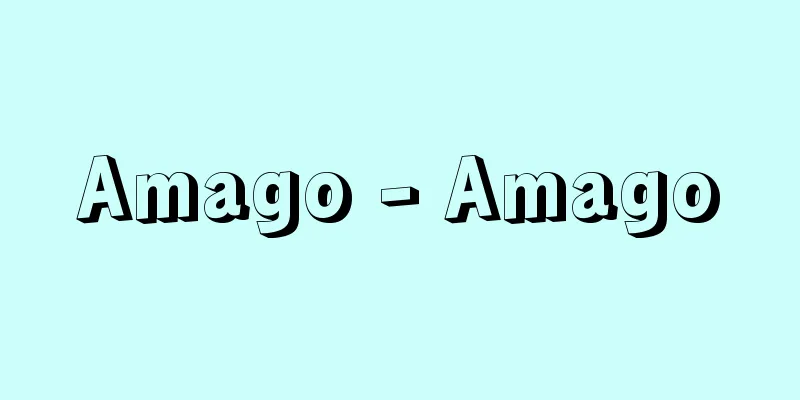Heat-resistant materials

|
A structural material that can withstand high temperatures. Generally, materials become softer at higher temperatures and are more susceptible to oxidation and other chemical changes when heated, so heat-resistant materials are required to withstand these. They can be broadly divided into heat-resistant metal materials and ceramics. High-melting-point metals, such as tungsten and molybdenum, which have melting points of over 2000°C, are very susceptible to oxidation and are only used in vacuum or inert gas atmospheres. Iron-, nickel-, and cobalt-based alloys that have been given oxidation resistance by adding 13 to 20% chromium are called heat-resistant alloys. Alloys that have been given high-temperature strength by adding several percent or more of molybdenum, vanadium, titanium, aluminum, etc. to these are called superalloys, and iron-based alloys with a small amount of alloying elements are called heat-resistant steels. Steels with a total amount of alloying elements, including chromium, of several percent or less are called low-alloy heat-resistant steels. Low-alloy heat-resistant steels have considerable strength up to about 550°C, high-alloy heat-resistant steels up to about 750°C, and superalloys up to about 950°C. If exposed to higher temperatures, high melting point metals or ceramics must be used. Ceramics have long been developed as ceramic products such as porcelain, which are made by firing natural raw materials such as clay. Recently, research has been conducted on inorganic materials made by firing densely various oxides such as aluminum oxide, and many types of chemically refined carbides, nitrides, silicides, and borides such as silicon nitride and silicon carbide. These are called new ceramics or fine ceramics. Ceramic powder bonded with metal is called cermet. [Hajime Sudo] [Reference items] | | | |Source: Shogakukan Encyclopedia Nipponica About Encyclopedia Nipponica Information | Legend |
|
高温に耐えられる構造材料。材料は一般に高温になるほど軟らかくなり、また加熱したことによる酸化やそのほかの化学変化を受けやすくなるので、耐熱材料にはこれらに耐える性質が要求される。大別すると耐熱金属材料とセラミックスとになる。タングステンやモリブデンのように2000℃以上の融点をもつ、いわゆる高融点金属は非常に酸化されやすく、真空中か不活性ガス雰囲気中以外では使用されない。クロムを13~20%添加して耐酸化性を与えた鉄、ニッケル、コバルト基合金を耐熱合金という。これらにモリブデン、バナジウム、チタン、アルミニウムなどを数%以上添加して高温強度を与えた合金を超合金super alloyといい、合金元素量が少ない鉄基合金を耐熱鋼という。クロムを含めて合金元素量の総計が数%以下の鋼を低合金耐熱鋼という。低合金耐熱鋼は約550℃まで、高合金耐熱鋼は約750℃まで、超合金は約950℃までかなりの強度を示す。これ以上の温度にさらされる場合は高融点金属かセラミックスを用いなければならない。 セラミックスは古くから粘土など天然の原料を用いて焼き固めた陶磁器などの窯業製品として発達してきた。最近では酸化アルミニウムをはじめ各種の酸化物、窒化ケイ素や炭化ケイ素など多くの種類の化学的に精製された炭化物、窒化物、ケイ化物、ホウ化物などを緻密(ちみつ)に焼き固めた無機材料が研究されている。これらをニューセラミックス、ファインセラミックスという。セラミックス粉末を金属で結合したものをサーメットという。 [須藤 一] [参照項目] | | | |出典 小学館 日本大百科全書(ニッポニカ)日本大百科全書(ニッポニカ)について 情報 | 凡例 |
Recommend
dumb cane
…The genus Dieffenbachia (Dieffenbachia) of the A...
Eustathios (Bishop of Sebaste)
...Monasticism was also strongly influenced by Sy...
Ina Kumazo - Inakumazo
...He was a local daimyo (chief official) and a l...
Piston engine
An engine with a circular cross section and a clo...
Clairo
French mathematician. Member of the Académie des S...
Religious group play - Kyodangeki
If earthly existence is merely an illusion, then ...
Hamilcar Barcas
290 BCE - 229 BCE Carthaginian politician and gene...
Prince Munetaka
Born: November 22, 1242, Kyoto [Died] July 29, 127...
Akihayama - Akihasan
This mountain is located in Tenryu Ward, Hamamats...
Nakai Riken
A Confucian scholar of the late Edo period. Born ...
Saburo Okubo - Ookubo Saburo
...It is found in the southern and west Kanto are...
Period - Kikan
It refers to a continuous division of time from o...
Akakura [Hot Springs] - Akakura
It is located in Myoko-Kogen Town (now Myoko City)...
Wilhelm Meister Theory
…F. Schlegel's Athenaeum Fragments, Idea Frag...
Kajikawa
A former village area in northern Niigata Prefectu...









